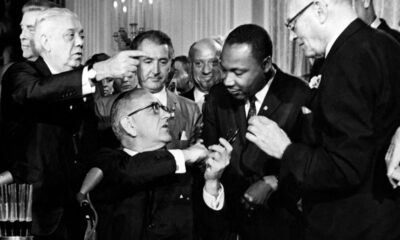Finance
Pregnancy discrimination law reduces women’s economic freedom

I attended the Association for Private Enterprise Education annual conference in Las Vegas earlier this week. One of the sessions I attended was titled “Improving Women’s Well-Being: Economic Freedom, Gender Ideologies, and Entrepreneurship.”
One of the presenters showed a slide about the federal government’s Pregnancy Discrimination Act (PDA) of 1978, saying it had increased economic freedom for women. I wrote her a note saying that, au contraire, it was reduced economic freedom for women and employers. When I met her in the hallway later, I pointed out that, in addition, a study by a Harvard economist found that it was paid for by married women of childbearing age.
Here is an elaboration of my points.
Economic freedom
When the government interferes with contracts between employers and employees, it limits the freedom of both parties. Take the PDA. You can certainly imagine a married woman who would want the freedom to contract with an employer who does not offer maternity benefits. Why? The most obvious reason is that she may not want to get pregnant. The benefit then appears to be of no value to her. But it’s worse than that. Although the benefit has no value, it does come at a cost. There is no such thing as a free lunch, and if employers are forced to offer this benefit, they will find ways to drive down wages (in dollars or in other benefits) for women, especially married women, of childbearing age.
That brings us to the economic issue: who pays?
Who pays for the Pregnancy Discrimination Act?
In June 1994 the American economics magazine published “The Incidence of Mandated Maternity Benefits” by Jonathan Gruber, then an assistant professor of economics at Harvard University. What he was able to do was compare wage growth in states that already mandated maternity benefits with growth in states that had no mandates. He hypothesized that in states without the mandate, pay for married women of childbearing age would increase more slowly once the PDA took effect than in states that already had the mandates. And that’s what he found.
He wrote:
The findings consistently indicate a shift in the costs of mandates on the order of 100 percent, with little effect on net labor input.
In short, the women who are supposed to benefit from the mandate are the ones who pay.
By the way, both Gruber and I made use of his research at the time we testified before Senator Ted Kennedy’s Labor and Personnel Committee when “Hillarycare” was being considered and was on its last legs before being defeated. Jonathan was invited by the Democratic majority; I was invited by the Republican minority, whose leading member was Senator Nancy Kassebaum of Kansas. She was, incidentally, the daughter of 1936 Republican presidential candidate Alf Landon.
The photo above shows me testifying for Kennedy and Kassebaum.
[Editor’s note: This episode of the Great Antidote with Kerianne Lawson on women and economic freedom may also be of interest.]













